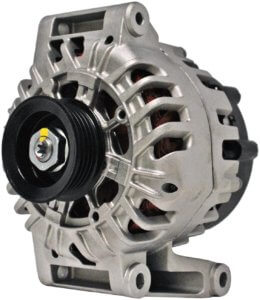How much do auto repair shops mark up parts
All auto repair shops mark up parts cost
Auto repair shops mark up parts by 66%-100%. That gives the shop a 50% profit, which is pretty standard for all retail business.
If you’re reading this, it’s probably because you got the invoice from the shop and then looked up the part price online and found it for a lot less. You think you got screwed. You didn’t. Here’s why you paid a fair price.
The auto parts prices you found online are irrelevant
Why? Because shops don’t buy their parts online. They buy them from the local dealer or auto parts store. Shops can’t wait days for the parts to arrive. They need the part NOW. So they call the dealer or local parts store and the part gets delivered, usually within 30-minutes.
Even if the shop did buy parts online, they still wouldn’t sell them to you for their cost. That’s simply not how businesses work
Let’s compare online alternator prices for a 2014 Chevrolet Equinox to dealer and local parts stores

ACDelco 23119615 alternator
• Rockauto.com lists a new ACDelco 23119615 alternator for $177.89 plus shipping
• Amazon sells a new ACDELCO 23119515 for $187.78 including shipping
• Ebay sells a new ACDELCO 23119515 for 208.91 including shipping
All of these online prices are irrelevant to the discussion of how much auto repair shops mark up their prices because repair shops don’t buy from online sources
Chevrolet Dealer prices for a 2014 Chevrolet Equinox alternator
The retail list price for a new alternator for this vehicle is $586.33. A shop gets a 25% discount off the retail list price, so the shop pays $439.74 for the alternator if they buy from the dealer.
Auto Parts store prices for a 2014 Chevrolet Equinox alternator
• Autozone doesn’t sell new alternators for this vehicle. They only sell rebuilt units.
• OReilly Auto Parts sells a new AC Delco alternator for $425.99. The shop gets a 20% discount from the store.
So it comes down to this: The shop can buy the part from the dealer for $439.74 or buy from O’Reilly for $340.59. You can buy it from O’Reilly for $425.74, but you’d have to install it yourself. Now let’s look at the shop’s markup
Why auto repair shops mark up parts is important to the survival of their business
Every time a shop installs a part, they incur a risk that the part may fail during the warranty period and require replacement. The part may come with a 1-year warranty from the supplier, but that warranty doesn’t cover the shop’s labor to remove the failed part and install the replacement part. So their auto parts markup price must cover that risk. Think about it: the part fails and the shop gets a free replacement part. But they still have to pay the technician to replace it. That comes right out of the shop’s pocket.
An auto repair shops markup parts profit isn’t included in the shop’s hourly labor rate
The hourly labor rate covers the cost of the technician and all associated benefits and taxes (social security, medicare, unemployment, and workers’ comp), overhead costs like the cost of the space, insurance, property taxes, permit and inspection fees, and recycling fees, office personnel (bookkeeper, service writer, etc) and a profit. But it doesn’t include a profit on the parts. If you want to bring your own part to the shop and offer to pay for just the labor, you’re basically screwing the shop out of the parts profit. That’s why most shops won’t install customer parts, or, if they will, they usually charge a higher labor rate to compensate for the lost profit.
What is a reasonable auto shop markup?
All retail businesses need at least a 35% gross profit (minimum) to survive and most stores price their products to get a 50% gross profit. Keep in mind that gross profit and markup are two different things. To get a 50% profit, you must double (200%, not 100%) the cost of the product. A 200% markup sounds bad, but it’s not. Let’s look at the numbers. If a product costs the business $50 and they mark it up 100% they make no profit ($50 x 100%= $50). But $50 x 200% = $100, which gives them a 50% profit margin.
So what’s the customer price on the Chevrolet alternator?
If the shop buys the part from O’Reilly, they’ll probably mark it up to $580 – $681. If they buy from the dealer, they’ll probably mark it up to $700. You could have paid less from the dealer, but the dealer’s labor rates are higher.
The bottom line on auto parts markup
In this case, if the shop buys from O’Reilly and sells the part to you for $580, they make $239.41 or 41,2% gross profit, well within the acceptable range for a retail store. If they sell the O’Reilly part to you for $681, they make or 49.9% gross profit.
If the shop buys the part from the dealer and sells it to you for $700, they make $260.26 or 37.1% gross profit.
Let’s take a look at gross profit margins of different retail businesses.
Typical gross profit margins for retail businesses
Women’s clothing 46%
Furniture 44%
Optical 57%
Sporting goods 38%
Home furnishing 47%
auto parts store 37%
Tires 36%
Restaurants 61%
©, 2021 Rick Muscoplat
Posted on by Rick Muscoplat